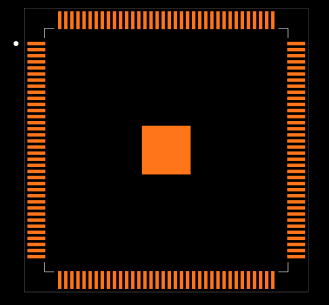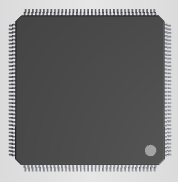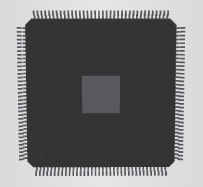EP4CE22E22I7N Features, Applications and Datasheet
2025-04-02 09:26:57 644
EP4CE22E22I7N Description
The EP4CE22E22I7N, a member of the Cyclone IV E series from Intel (formerly Altera), is a powerful Field-Programmable Gate Array (FPGA) designed for a wide range of applications requiring high performance and flexibility.The EP4CE22E2217N FPGA is a feature-rich device that offers a significant amount of configurable logic resources. With a total of 22,320 logic elements, 1,395 logic array blocks (LABs), and 79 input/output (l/0) pins, it is well-suited for complex digital systems requiring high levels of customization and flexibility. The device operateswithin a voltage range of 1 V to 1.2 V, supporting a wide range of operating temperatures from -40'C to +100'C, making it suitable for demanding environments.
EP4CE22E22I7N Features
High Performance: By utilizing the Cyclone IV E architecture of the EP4CE22E22I7N, which is optimized for high-performance applications, designers can obtain quicker processing rates and improved system performance overall.
Flexible I/O: The FPGA has 79 I/O pins that support LVTTL, LVCMOS, and SSTL, among other I/O standards. This enables smooth integration with a variety of peripherals and devices.
Low Power Consumption: Because of its low power consumption design, the device is a great option for applications that require a lot of power, such battery-powered systems and portable gadgets.
Advanced Memory: The EP4CE22E22I7N provides enough on-chip memory capacity for storing data and running sophisticated algorithms, with a total memory of 594 kbit.
Simple Programming: The EP4CE22E22I7N FPGA design, simulation, and programming processes are made easier by Intel's extensive toolkit, which includes the Quartus Prime software.
EP4CE22E22I7N Applications
The EP4CE22E22I7N FPGA's robust performance and comprehensive feature set have made it widely employed in a variety of industries and applications. Among its principal areas of application are:
Automotive Electronics: Engine control, advanced driver-assistance systems (ADAS), and in-vehicle networking are just a few of the applications that the FPGA can be used for in automotive systems because to its excellent reliability and wide operating temperature range.
Communications: The diverse I/O interfaces and high-speed processing capabilities of the EP4CE22E22I7N make it a great option for base stations, switches, and routers in communications systems.
Industrial Automation: The FPGA is ideally suited for applications involving process control, machine vision, and robotics due to its sturdy construction and capacity to manage intricate logic operations.
Consumer Electronics: The EP4CE22E22I7N is a desirable choice for consumer electronics products, such as smartphones, tablets, and wearable technology, due to its low power consumption and great performance.
EP4CE22E22I7N CAD Model
Footprint

3D Model



EP4CE22E22I7N Alternatives
One alternative within the same family is the EP4CE10E22I7N, which offers a similar feature set but with fewer logic elements and I/O pins.
EP4CE22E22I7N Manufacturer
Intel Corporation, a global leader in electronics, excels in developing cutting-edge components. Their FPGA & SoC FPGA portfolios, like the Stratix 10 series, showcase innovative Hyperflex architecture, delivering unparalleled performance, energy efficiency, density, & integration capabilities. With embedded processors, high-speed I/Os, & DSP engines, Intel's offerings empower diverse applications from DSP to industrial controls, demonstrating their commitment to advancing the electronics industry.
EP4CE22E22I7N FAQ
1. Question: What type of chip is the EP4CE22E22I7N?
Answer: The EP4CE22E22I7N is a Cyclone IV series field programmable gate array (FPGA) chip produced by Intel/Altera (now Intel Programmable Solutions Group). It has high performance, low power consumption and flexible programmability, and is widely used in various digital circuit designs.
2. Question: What is the maximum operating frequency of EP4CE22E22I7N?
Answer: The specific maximum operating frequency of the EP4CE22E22I7N may vary for different speed grades and configurations. However, the Cyclone IV family of FPGAs typically supports higher operating frequencies, allowing them to handle high-speed data processing and complex logic operations. The specific maximum operating frequency needs to be obtained by referring to the datasheet for that model or by contacting the manufacturer.
3. Question: How do I program and configure the EP4CE22E22I7N?
Answer: The EP4CE22E22I7N can be programmed and configured by using Intel Quartus Prime software, a powerful FPGA design tool that supports the entire process from design entry, simulation, synthesis, to layout and routing. Once the design is complete, the configuration file can be downloaded to the FPGA chip using Quartus Prime's Programmer tool.
4. Question: What are the power consumption characteristics of the EP4CE22E22I7N? Answer: The EP4CE22E22I7N utilizes advanced low-power technologies designed to reduce power consumption and improve energy efficiency. Its power consumption characteristics are affected by a variety of factors, including operating frequency, supply voltage, configuration, and application-specific load. In order to obtain the best power performance, it is recommended that power optimization strategies, such as clock gating and power supply gating, be fully considered during design.
5. Question: What are some common application areas for the EP4CE22E22I7N? Answer: The EP4CE22E22I7N is widely used in a variety of applications due to its high performance and flexibility. Common application areas include digital signal processing (DSP), image processing, communication systems, industrial control, medical electronics, and automotive electronics. These fields often require processing large amounts of data or executing complex algorithms, and the high parallel processing power and reconfigurability of FPGAs make them ideal for these applications.
In conclusion
The EP4CE22E22I7N FPGA from Intel Programmable Solutions Group (formerly Altera) is a highly capable and versatile device that offers a wealth of configurable logic resources and features. Its high-performance capabilities, programmability, and wide range of applications make it an excellent choice for designers looking to create complex and customized digital systems. Whether in automotive, industrial automation, telecommunications, or other sectors, the EP4CE22E22I7N stands as a testament to the power and flexibility of modern FPGAs.




